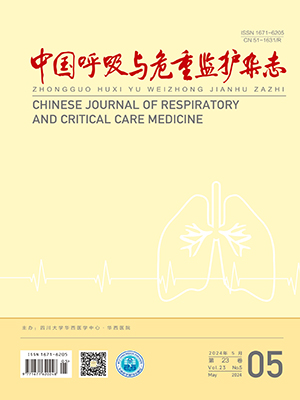| 1. |
Saito H, Kameda Y, Masui K, et al. Correlations between thin-section CT findings, histopathological and clinical findings of small pulmonary adenocarcinomas. Lung Cancer, 2011, 71(2) : 137-143.
|
| 2. |
Austin JH, Garg K, Aberle D, et al. Radiologic implications of the 2011 classification of adenocarcinoma of the lung. Radiology, 2013, 266(1):62-71.
|
| 3. |
Travis WD, Brambilla E, Noguchi M, et al. International association for the study of lung cancer/American thoracic society/European respiratory society international multidisciplinary classification of lung adenocarcinoma. J Thorac Oncol, 2011, 6(2):244-285.
|
| 4. |
Travis WD, Brambilla E, Nicholson AG, et al. The 2015 World Health Organization Classification of Lung Tumors: Impact of Genetic, Clinical and Radiologic Advances Since the 2004 Classification. J Thorac Oncol, 2015, 10(9): 1243-1260.
|
| 5. |
Russell PA, Wainer Z, Wright GM, et al. Does lung adenocarcinomasubtype predict patient survival? A clinicopathologic study based on the new International association for the study of lung cancer /American thoracic society/European respiratory society international multidisciplinary lung adenocarcinoma classification. J Thoracic Oncol, 2011, 6(9): 1496-1504.
|
| 6. |
Warth A, Stenzinger A, von Brünneck AC, et al. Interobserver variability in the application of the novel IASLC /ATS /ERS classification for pulmonary adenocarcinomas. Eur Respir J, 2012,40(5): 1221-1227.
|
| 7. |
Eguchi T, Yoshizawa A, Kawakami S, et al. Tumor size and computed tomography attenuation of pulmonary pure ground-glass nodules are useful for predicting pathological invasiveness. PLos One, 2014, 9(5): e97867.
|
| 8. |
Lee KH, Goo JM, Park SJ, et al. Correlation between the size of the solid component on thin-section CT and the invasive component on pathology in small lung adenocarcinomas manifesting as ground-glass nodules. J Thoracic Oncol, 2014, 9(1): 74-82.
|
| 9. |
Fan L, Liu SY, Li QC, et al. Multidetector CT features of pulmonary focal ground-glass opacity: differences between benign and malignant. Br J Radiol, 2012,85(1015), 897-904.
|
| 10. |
Takaashima S, Maruyama Y, Hasegawa M, et al. CT findings and progression of small peripheral lung neoplasms having a replacement growth pattern. AJR, 2003, 180(3): 817-826.
|
| 11. |
肖时满, 张玉, 强金伟, 等. 超高分辨率 CT(UHRCT)鉴别肺原位腺癌(AIS)与微浸润腺癌(MIA). 复旦学报(医学版), 2014,41(3): 285-290.
|
| 12. |
秦福兵, 陆友金. 纯磨玻璃结节定量 CT 鉴别肺浸润性腺癌与浸润前病变和微浸润腺癌. 中国医学计算机成像杂志, 2016,22(1): 22-26.
|
| 13. |
Gao F, Li M, Ge XJ, et al. Multi-detector spiral CT study of the relationships between pulmonary ground-glass nodules and blood vessels. Eur Radiol, 2013, 23(12): 3271-3277.
|




